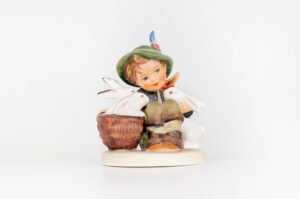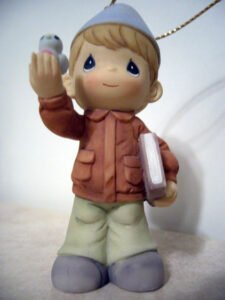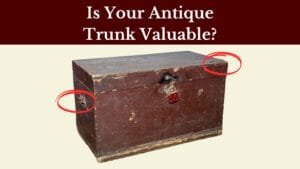For a figurine collector, original Hummel figurines have always been a gem. These adorable figures inspired by Sister Maria Innocentia Hummel’s sketches not only enliven childhood memories but also attract hefty prices at auction.
If you want to know whether your Hummel figurines are worth something big, this price guide is just for you. You’ll learn how to spot a valuable Hummel and find its estimated monetary value!
A Brief History of M.I. Hummel Figurines
The first production of Hummel figurines began back in 1935 when porcelain maker Franz Goebel first saw Maria Innocentia (aka Berta Hummel or Sister Hummel) Hummel’s pastoral drawings. These figures became quite popular in America.
But after WWII, W. Goebel Porzellanfabrik had to stop the production of Hummel figurines as they were banned in Germany. But this didn’t stop their popularity.
At the same time, another distributor, Dr. Herbert Dubler and Ars Sacra, rose in New York and continued the production of Hummels. These figurines also became popular among soldiers as a perfect gift for sending to their homes.
Assessing the Value of Hummel Figurines
Generally, most common vintage MI Hummel figurines sell for $40 – $70. But some rare individual models or large-size pieces can be worth up to a few hundred to a few thousand dollars, due to their rarity.
Let’s understand what factors affect the value of an M.I. Hummel figurine:
- Condition: The better the condition of your Hummel figure, the more it’s worth. This means that a figurine with chips, cracks, and chipped paint will be less valuable than one in pristine condition.
- Size: Obviously, large-size Hummel figurines will be more valuable than smaller ones.
But if the model is rare, even a small M.I. figurine can be worth a fortune. For example, a rare 12.6-inch 151 Madonna Variation Hummel Figurine sold for $8,000! - Packaging: A Hummel figurine kept intact in its original package in great condition will attract more collectors and high prices. The same model without packaging would be worth less.
- Design: Generally, complicated Hummel figure designs, especially the ones that include more than two figures, such as ‘Picture Perfect’ and ‘Adventure Bound,’ are worth more than simple, single-figure models.
- Rarity & Demand: The uncommon Hummel figurine models that aren’t easily found are quite valuable, just like the Hummel 853 “Hungarian Not For You” figure, which won a bid of $3,800 on eBay. Similarly, some designs like, ‘Merry Wanderer’ are generally more collectible.
Spotting a Hummel Figurine Among Other Porcelain Figures
The first thing to note is that a Hummel porcelain figure looks so German, from the attire of the figures to the craftsmanship. Then comes the trademarks and mold numbers to verify a real Hummel piece.
Appearance & Features
Apart from the marks and numbers, Hummel figurines display the following specific identifying features:
- Cherubic figurines of young children doing some kind of activity
- Rosy cheeks, big eyes, and a gentle expression on the faces of figurines
- Pastel-like, muted, and soft colors with watercolorish glaze
- German attire & craftsmanship
- A stylized base as a setting for the figurine’s scenic narrative
- Heavy, hard porcelain body with a shiny glaze
Goebel Trademarks
The most accurate way of spotting a Hummel figurine is by its marks. Remember that Hummel figures were made by a porcelain manufacturer Goebel, not Hummel.
So, look for the Goebel factory trademarks on genuine Hummel figures. In some pieces, you can also see the ‘W Germany’ mark for West Germany. If you see one with a ‘Hummel’ mark or signature, it’s a forged piece.
Here’s a reference table with all the Goebel trademarks (hand-drawn) to track the age of and identify your M.I. figurine.
| Trademark Number | Marks | Manufacturing Years | Age |
| TMK – 1 |  | 1935 – 1949 | 75 – 90 years |
| TMK – 2 | 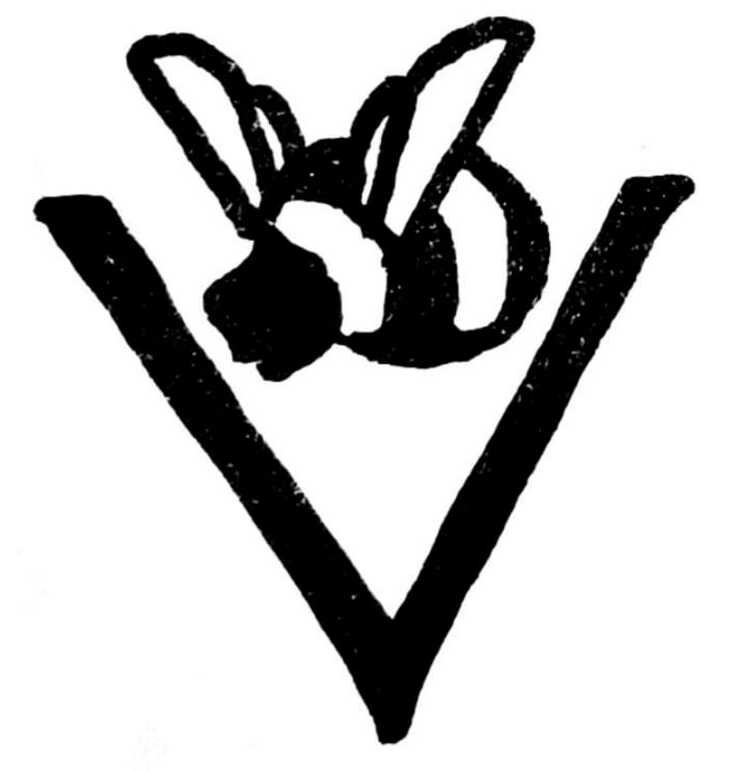 | 1950 – 1959 | 65 – 75 years |
| TMK – 3 | 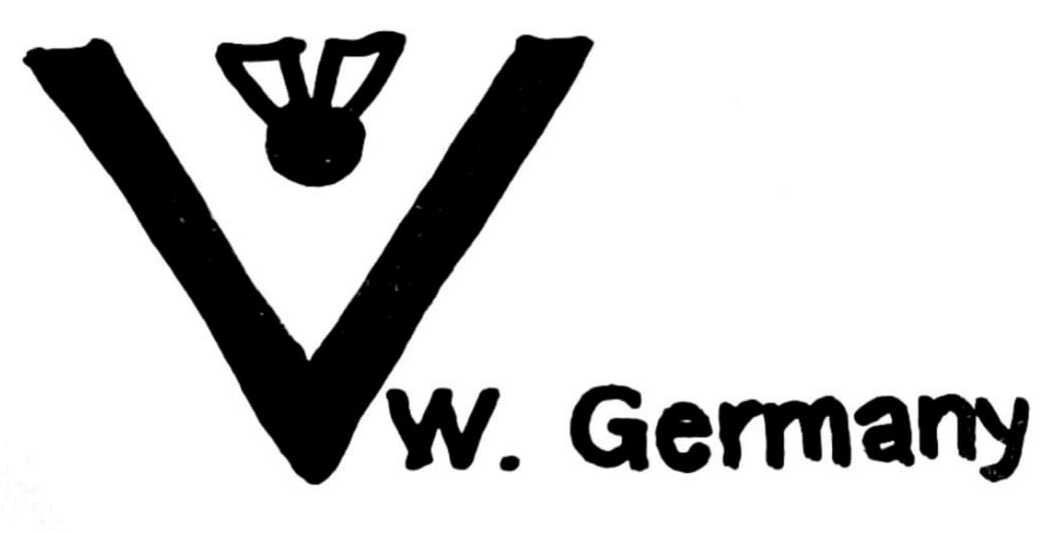 | 1960 – 1972 | 50 – 65 years |
| TMK – 4 | 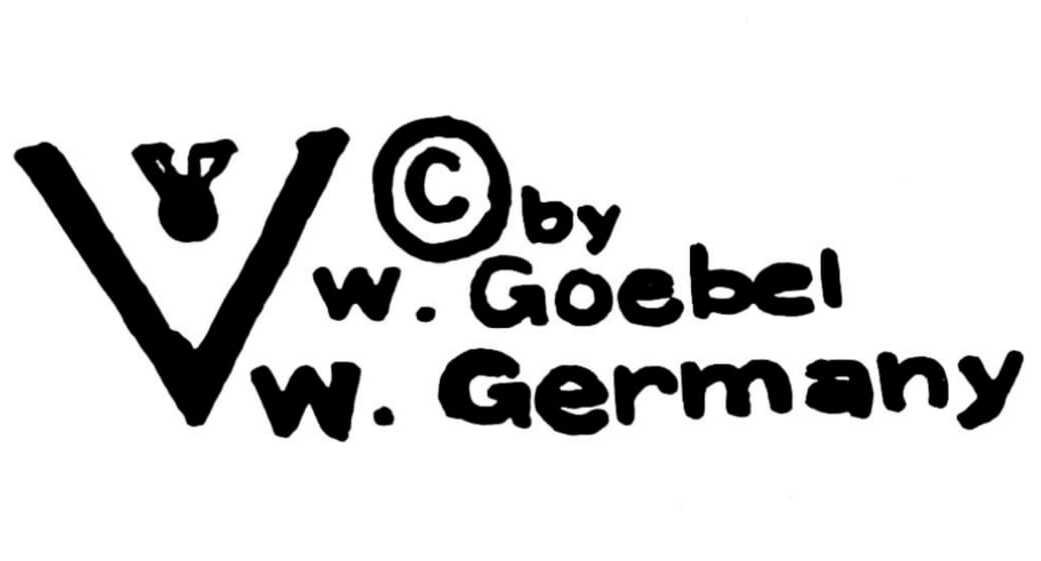 | 1964 – 1972 | 50 – 60 years |
| TMK – 5 | 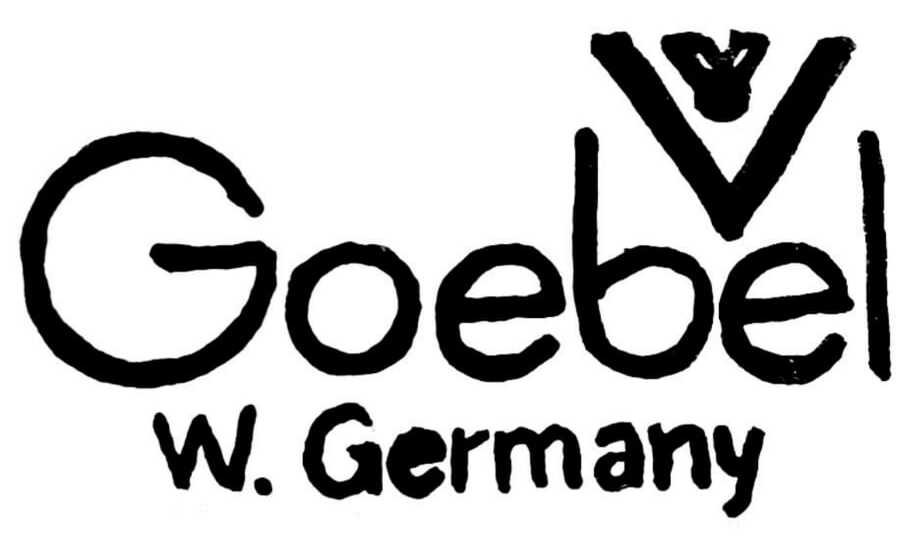 | 1972 – 1979 | 45 – 52 years |
| TMK – 6 | 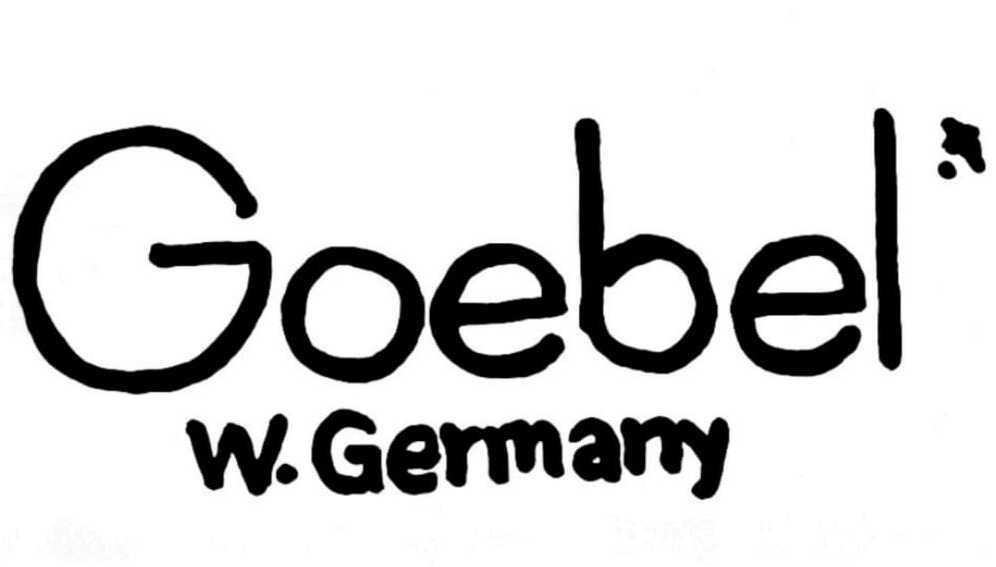 | 1979 – 1990 | 35 – 50 years |
| TMK – 7 | 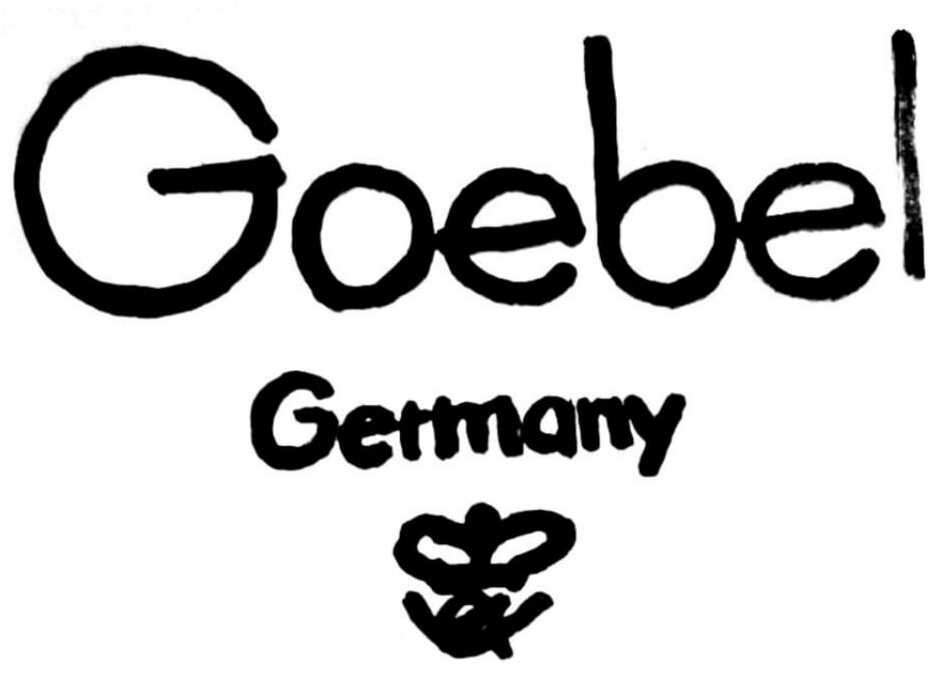 | 1990 – 1999 | 25 – 35 years |
| TMK – 8 |  | 2000 – 2008 | 15 – 23 years |
| TMK – 9 | 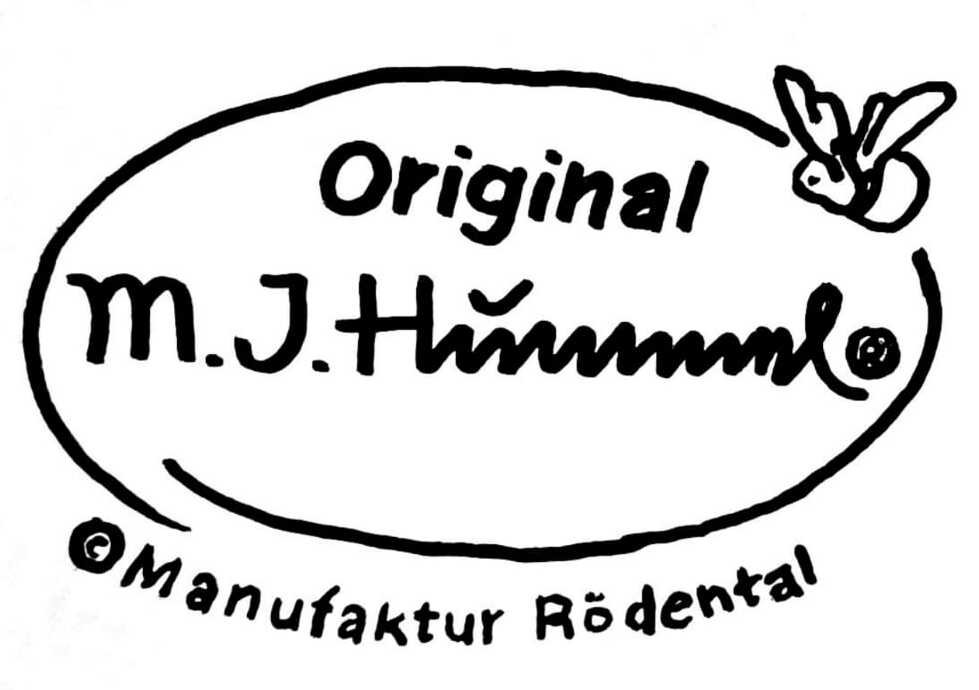 | 2000 – present | At least 20 years old |
Hummel or ‘HUM’ Numbers
Most Hummel figurines bear a 1-4 digit number, which is the model number, a key identification feature. Each model is specified by its specific number. For example, ‘151’ is ‘Madonna,’ ‘7’ is ‘Merry Wanderer,’ ‘92’ is ‘Little Stopper’ model, and so on.
Generally, the 1930 – 1950s figurines have a 1-2 digit number incised or hand-painted serial (HUM) number. The post-1950s figurines might also have a size indicator – 0,1 and 2 for the ‘small,’ ‘medium,’ and ‘large-sized’ figures next to the HUM numbers.
Look for a ‘/X’ incised mark (next to the HUM number) on the bottom, which marks for extra large figurines.
Decoration or Size Numbers
Most early 1930 – 1950s Goebel figurines feature an incised (or hand-painted) decoration designation that tells about the size of the figurine. This number has a slash mark and an alphabet or number next to it. For example, 71/I, 141/V, 399/III, etc.
On the other hand, the newer models had a crystalline or satin glaze, with no such decoration marks and numbers. You can also spot these post-1950s figurines by their flat, semi-gloss glazes, just like frost or ice formations.
Besides, you may also find 1-2 digit numbers, which is one of the factory control numbers used for a smooth production process.
Spotting the Fake Hummel Figurines
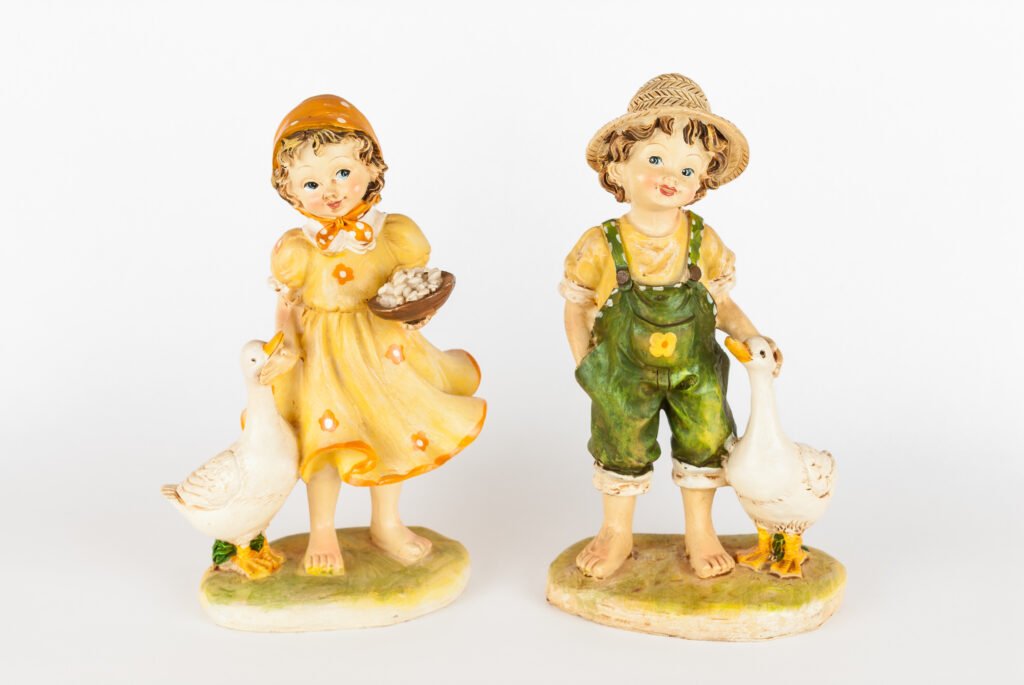
While the trademarks and numbers will help you spot a real valuable M.I. Hummel figurine, you can also use the following other measures to ensure:
- Lightweight: Generally, a forged or molded Hummel figurine’s weight will be less than the original model. So, make sure to compare the figurine’s weight with the real model.
- Cheap Material: If your Hummel figure is made of low-quality materials, such as ceramic, chalk, stone, or plaster, it’s clearly not a real Hummel. Why? Because the Goebel company only used a very specific porcelain mix to make all M.I. figurines.
- Fake Features: You can also spot a forged Hummel by its varied or fake features, a different shape, or a different color than the original palette used by Maria Innocentia for the model.
6 Most Valuable Hummel Figurines to Spot!
If you have a Hummel collection, look for the following six most popular and valuable ones among them:
1. Merry Wanderer (HUM 7)
Merry Wanderer is one of the most valuable and rare Hummel figurines that you must look for. This adorable figurine is a base model featuring a young boy walking with an umbrella on his shoulder and a bag in his hand.
But remember that only the base or prototype ‘Merry Wanderer’ model is the most valuable, going up to $1,500, unlike the variations, whose values range from $150 to $600.
2. Adventure Bound (HUM 347)
This sophisticated figurine shows a scene of seven little kids in German attire heading to an adventure. It was distributed in 1971 and was once popular as ‘Seven Swabians.’ The value of Hummel’s ‘Adventure Bound’ figure ranges from $500 to $2,000.
One rare Adventure Bound figure with a dedication note on the base was sold for $3,000 on eBay. Currently, this #347 figurine is listed at $3,990 on Hummel’s official website.
3. Ring Around the Rosie (HUM 348)
Common Ring Around the Rosie figurines are around 6 inches tall, usually selling for under $600 – $700. But there are also a few rare 7-inch tall figurines that are worth up to $2,000 or more. One rare Hummel figurine is available at almost $3,000 on Hummel’s shopping site.
This figurine with mold shows a pretty scene of four little girls playing Ring Around the Rosie grassy base. All four girls are wearing German outfits but two of them are wearing scarves/bandanas on their heads.
4. Apple Tree Boy (HUM 142) & Apple Tree Girl (HUM 141)
The Apple Tree figurines display a young boy and a little girl sitting on a stiff branch of an apple tree. Usually, these two separate figurines are sold as a full set of two at around $200 – $900, depending on size and condition.
A very rare 32-inch giant Apple Tree Boy figurine was sold for a whopping $19,000 on eBay! Likewise, a 10.25-inch Apple Tree Girl figurine is listed at $1,250 on Hummel’s website.
5. Stormy Weather (HUM 71)
Another valuable Hummel figurine, this one was made by master sculptor Reinhold Unger in 1937. It depicts a lovely scene of a little girl and boy standing under a big umbrella and a walking stick. The ‘Stormy Weather’ figurine generally sells for $200 – $300, but a rare pre-1945 model with a TMK1 mark sold for $650 on eBay!
6. Umbrella Boy (HUM 152/A) & Umbrella Girl (152/B)
Like the Apple Tree Girl & Boy, these two separate figurines are also sold as a set. This model shows a little boy/girl enjoying rain sitting under an umbrella. The value of this set generally ranges from $200 to $500, but large single figurines can be worth up to a thousand, like this Umbrella Boy figurine (152/II) listed at $1,600 at the Hummel online shop!
Because of its numerous models and variations, even experienced Hummel collectors get confused between a real Hummel figurine and a fake one. This guide is an easy tool for spotting the difference and finding the true value of a real Goebel Hummel figurine. But it’s not just Hummel; Spanish Lladro Figurines also hold quite a value among the collectors!
Note: This article is intended for informational, educational, and entertainment purposes only. Some images are illustrative and may not represent actual brands, products, or related entities. All trademarks, product names, brand logos, packaging, and other intellectual property referenced remain the exclusive property of their respective owners. Any brand mentions or references are provided solely for descriptive and educational context and do not imply any formal or commercial association.

